- Home
- James Patterson
The Murder of King Tut: The Plot to Kill the Child King
The Murder of King Tut: The Plot to Kill the Child King Read online
Copyright
Copyright © 2009 by James Patterson
All rights reserved. Except as permitted under the U.S. Copyright Act of 1976, no part of this publication may be reproduced, distributed, or transmitted in any form or by any means, or stored in a database or retrieval system, without the prior written permission of the publisher.
Little, Brown and Company
Hachette Book Group
237 Park Avenue,
New York, NY 10017
Visit our website at www.HachetteBookGroup.com
www.twitter.com/littlebrown
First eBook Edition: September 2009
Little, Brown and Company is a division of Hachette Book Group, Inc. The Little, Brown name and logo are trademarks of Hachette Book Group, Inc.
ISBN: 978-0-446-55120-5
Contents
Copyright
Author’s Note
Prologue
Valley of the Kings
Palm Beach, Florida
Part One
Chapter 1: Valley of the Kings
Chapter 2: Thebes
Chapter 3: Thebes
Chapter 4: Didlington Hall Near Swaffham, England
Chapter 5: Didlington Hall
Chapter 6: Didlington Hall
Chapter 7: Alexandria
Chapter 8: Beni Hasan
Chapter 9: Thebes
Chapter 10: Thebes
Chapter 11: Thebes
Chapter 12: Thebes
Chapter 13: Amarna
Chapter 14: Amarna
Chapter 15: Amarna
Chapter 16: Amarna
Chapter 17: Deir el-Bahri
Chapter 18: Deir el-Bahri
Chapter 19: Valley of the Kings
Chapter 20: Valley of the Kings
Chapter 21: Valley of the Kings
Chapter 22: Valley of the Kings
Chapter 23: Valley of the Kings
Chapter 24: Valley of the Kings
Chapter 25: Valley of the Kings
Chapter 26: Valley of the Kings
Chapter 27: Amarna
Chapter 28: Amarna
Part Two
Chapter 29: Palm Beach, Florida
Chapter 30: Valley of the Kings
Chapter 31: Valley of the Kings
Chapter 32: Amarna
Chapter 33: Amarna
Chapter 34: Amarna
Chapter 35: Amarna
Chapter 36: Amarna
Chapter 37: Thebes
Chapter 38: Thebes
Chapter 39: Amarna
Chapter 40: Luxor
Chapter 41: Amarna
Chapter 42: Thebes
Chapter 43: Tut’s Palace
Chapter 44: Egyptian Desert
Chapter 45: Egyptian Desert
Chapter 46: Egyptian Desert
Chapter 47: Egyptian Desert
Chapter 48: Thebes
Chapter 49: Thebes
Chapter 50: Luxor
Chapter 51: Valley of the Kings
Chapter 52: Egyptian Desert
Chapter 53: Tut’s Palace
Chapter 54: Tut’s Palace
Chapter 55: Tut’s Palace
Chapter 56: Tut’s Palace
Chapter 57: Tut’s Palace
Chapter 58: Egyptian Desert
Chapter 59: Tut’s Palace
Chapter 60: Tut’s Palace
Chapter 61: Tut’s Palace
Chapter 62: Valley of the Kings
Chapter 63: Valley of the Kings
Chapter 64: Tut’s Palace
Chapter 65: Valley of the Kings
Chapter 66: Highclere Castle
Part Three
Chapter 67: Palm Beach, Florida
Chapter 68: Valley of the Kings
Chapter 69: Valley of the Kings
Chapter 70: Egyptian Desert
Chapter 71: Valley of the Kings
Chapter 72: Valley of the Kings
Chapter 73: Valley of the Kings
Chapter 74: Valley of the Kings
Chapter 75: Luxor
Chapter 76: Valley of the Kings
Chapter 77: Valley of the Kings
Chapter 78: Valley of the Kings
Chapter 79: Valley of the Kings
Chapter 80: Tut’s Palace
Chapter 81: Tut’s Palace
Chapter 82: Tut’s Palace
Chapter 83: Egyptian Border
Chapter 84: Tut’s Palace
Chapter 85: Tut’s Palace
Chapter 86: Tut’s Palace
Chapter 87: Valley of the Kings
Chapter 88: Valley of the Kings
Chapter 89: Valley of the Kings
Chapter 90: Valley of the Kings
Chapter 91: Valley of the Kings
Chapter 92: Valley of the Kings
Chapter 93: Valley of the Kings
Chapter 94: Valley of the Kings
Chapter 95: Cairo
Chapter 96: Valley of the Kings
Chapter 97: Palm Beach, Florida
Chapter 98: Tut’s Palace
Chapter 99: Palm Beach, Florida
Chapter 100: London
Epilogue: Valley of the Kings
Books by James Patterson
About the Authors
For Frank Nicolo
—JP
For Callie
—MD
Author’s Note
JUST LIKE THE ASSOCIATED PRESS, I have my own style manual. “JP Writing Style and Book Elements” is a list of nineteen bulleted points that I keep within arm’s reach whenever I’m working. Point number eighteen is written in capital letters, because no matter how often I read it, I need to be reminded that it is of the utmost importance: RESEARCH HELPS. DON’T FAKE ANYTHING—NOT BRAIN TUMORS, NOT DROWNINGS, NOT EVEN A BEE STING.
I don’t think I’ve ever done more research for a book. From the instant the idea hit me and I teamed up with Marty Dugard to write this story, it’s been total immersion in ancient Egypt. The book is a murder mystery, but the plunge back in time added a whole other layer of detective work. We didn’t just need to know the players in our drama; we also needed to know what foods they ate, the clothes they wore, how they loved, and, ultimately, the ways they might have killed each other.
Like number eighteen says: DON’T FAKE ANYTHING.
So we didn’t. Marty’s historical legwork involved trips to London and to Tut’s tomb in Egypt’s Valley of the Kings. I lost myself in books and online research. We then combined our notes and began writing. One astounding fact about Egyptian history is that so much of it is still unknown. So when we came to a gap, we went back to the research for answers. Then we put forth our theory as to what happened. We constructed conversations and motives and rich scenes of palace life—all grounded in long hours of research.
It’s nothing new for histories to be speculative, but there’s a difference between guessing and basing a theory on cold hard facts. We chose the facts.
As for Howard Carter, he is almost a contemporary, so his life was much easier to document. I resisted the temptation to speculate about his relationship with Lady Evelyn Herbert, though I thoroughly hoped to find a steamy journal entry that would allow me to muse at will. You can draw your own conclusions.
I hope you enjoy The Murder of King Tut. It’s been a lot of fun to write. I became quite fond of the ill-fated Boy King and his equally ill-fated queen. They lived thousands of years ago, but their love for each other was so powerful and real that I believe they had one of history’s great romances. It’s a shame it all had to end so soon—and so mysteriously.
Prologue
> Valley of the Kings
1900
IT WAS NEW YEAR’S EVE as a somber, good-looking explorer named Howard Carter, speaking fluent Arabic, gave the order to begin digging.
Carter stood in a claustrophobic chamber more than three hundred feet underground. The air was dank, but he craved a cigarette. He was addicted to the damn things. Sweat rings stained the armpits of his white button-down, and dust coated his work boots. The sandal-clad Egyptian workers at his side began to shovel for all they were worth.
It had been almost two years since Carter had been thrown from his horse far out in the desert. That lucky fall had changed his life.
He had landed hard on the stony soil but was amazed to find himself peering at a deep cleft in the ground. It appeared to be the hidden entrance to an ancient burial chamber.
Working quickly and in secret, the twenty-six-year-old Egyptologist obtained the proper government permissions, then hired a crew to begin digging.
Now he expected to become famous at a very young age—and filthy rich.
Early Egyptian rulers had been buried inside elaborate stone pyramids, but centuries of ransacking by tomb robbers inspired later pharaohs to conceal their burial sites by carving them into the ground.
Once a pharaoh died, was mummified, and then sealed inside such a tomb with all his worldly possessions, great pains were taken to hide its location.
But that didn’t help. Tomb robbers seemed to find every one.
Carter, a square-shouldered man who favored bow ties, linen trousers, and homburg hats, thought this tomb might be the exception. The limestone chips that had been dumped into the tunnels and shaft by some long-ago builder—a simple yet ingenious method to keep out bandits—appeared untouched.
Carter and his workers had already spent months removing the shards. With each load that was hauled away, he became more and more certain that there was a great undisturbed burial chamber hidden deep within the ground. If he was right, the tomb would be filled with priceless treasures: gold and gems, as well as a pharaoh’s mummy.
Howard Carter would be rich beyond his wildest dreams, and his dreams were indeed spectacular.
“The men have now gone down ninety-seven meters vertical drop,” Carter had written to Lady Amherst, his longtime patron, “and still no end.” Indeed, when widened the narrow opening that he had stumbled upon revealed a network of tunnels leading farther underground.
At one point, a tunnel branched off into a chamber that contained a larger-than-life statue of an Egyptian pharaoh.
But that tunnel had dead-ended into a vertical shaft filled with rock and debris.
As the months passed, the workers forged on, digging ever deeper, so deep in fact that the men had to be lowered down by rope each day. Carter’s hopes soared. He even took the unusual step of contacting Britain’s consul general in Cairo to prepare him for the glorious moment when a “virgin” tomb would be opened.
Now he stood at the bottom of the shaft. Before him was a doorway sealed with plaster and stamped with the mark of a pharaoh—the entrance to a burial chamber.
Carter ordered his workers to knock it down.
The shaft was suddenly choked with noise and a storm of dust as the men used picks and crowbars to demolish the ancient door. Carter hacked into his handkerchief as he struggled to see through the haze.
His heart raced as he finally held his lantern into the burial chamber. The workers standing behind him peered excitedly over his shoulder.
There was nothing there.
The treasure, and the pharaoh’s mummy, had already been stolen.
By somebody else.
Palm Beach, Florida
Present Day
“THIS IS JAMES PATTERSON CALLING. Is Michael around? I have a mystery story to tell him.”
As most people would expect, I love a good mystery, and I thought I might have unearthed a real doozy to write about, which was why I had put in a call to my editor at Little, Brown, Michael Pietsch, who is also the publisher.
As I waited for Michael to come on the line—he usually takes my calls, night or day—I looked around my second-floor office. Am I completely mad? I wondered.
The last thing I needed right now was another writing project. I already had a new Alex Cross novel on the fires, and a Women’s Murder Club brewing, and a Maximum Ride to finish. In fact, there were twenty-four manuscripts—none of them yet completed—laid out on the expansive desk surface that occupies most of my office. I could read some of the titles: Swimsuit, Witch & Wizard, Daniel X, Women’s Murder Club 9, Worst Case…
“I am completely crazy, aren’t I?” I said as Pietsch came on the line. Michael is a calm and calming presence, very smart, and a wonderful father who knows how to handle children—like me—most of the time. Over the years we have become a good fit and have turned out more than a dozen number one bestsellers together.
“Of course you’re crazy, but why the phone call?” he asked. “Why aren’t you writing?”
“I have an idea.”
“Only one?”
“I really like this one, Michael. Let me talk at you for a minute. OK? Since you seem to know everything about everything, you are probably aware that a collection of King Tut memorabilia is touring the world. People are lining up everywhere; the exhibit is usually sold out weeks in advance. I actually visited a Tut exhibit years ago at the Met in New York, and then recently in Fort Lauderdale. I’ve seen firsthand how Tut’s story blows people’s minds—men, women, and children, rich and poor.
“There’s something about Tut that brings ancient Egypt to life for most of us. It’s not just the incredible treasures he was buried with, or the art, or the near-miraculous discovery of the burial chamber by Howard Carter. It’s all of that, of course, but there’s something magical here, something iconic. Tut’s name was scrubbed from Egyptian history books for thousands of years, and now Tut is probably the most famous pharaoh of them all. And yet nobody knows that much about him.
“Michael, I want to do a book about Tut. Three parts: present day, as I learn—hopefully—more and more about the Boy King; then the amazing discovery of the tomb and treasures by Carter, who is probably worth a book on his own; and a third part about Tut himself.
“Did you know that Tut married his sister—and that theirs was an incredible love story? So what do you think? Are you going to try to stop me? Just this once, will you save me from myself?”
Michael’s infectious laughter traveled across the phone lines. “How’s the new Alex Cross coming?” he asked.
“Almost done—ahead of schedule. You’re going to like it.”
“Well, Jim, like just about everyone else, I’m fascinated by ancient Egypt, the pyramids, the Valley of the Kings, Tut, Nefertiti, the Rameses boys. So I have to tell you, I like the idea very much.”
Now it was my turn to smile and to laugh in relief.
“I’m really glad. So let me tell you what I thought would close the deal—though, obviously, I don’t need it. Michael, I have a hunch that Tut was murdered. And I hope, at least on paper, to prove it.”
Michael laughed again. “You had me at ‘King Tut,’” he quipped.
Part One
Chapter 1
Valley of the Kings
1492 BC
“THIS IS FAR ENOUGH! Stop right here.”
More than five hundred prisoners halted their march toward Thebes in a great field situated two miles from the city. A contingent of the palace guard watched over them in the sweltering midday sun. Not that it was necessary. The emaciated prisoners’ feet were bound with leather cord that was just long enough for them to frog walk; they could not run.
And even if they had tried to escape, their arms were tied behind their backs at the wrist and elbow.
They wouldn’t get far, and the punishment would be swift and brutal.
Ineni, the well-regarded royal architect, watched over the sad scene. He knew these men well. They had just spent five years in a remote va
lley, excavating a new burial place for Tuthmosis I.
By day they had endured withering summer heat and surprisingly frigid blasts of desert cold that sometimes strafed the valley.
At night they had slept under a sky shot through with stars.
It had been more than a thousand years since Cheops had built his great pyramid up the Nile in Giza. As grand and awe-inspiring as they were, pyramids turned out to be beacons of temptation for every local thief and blasphemous tomb robber. There wasn’t a single one that hadn’t been looted. Not one.
But the ingenious Ineni believed he had the solution to the pyramid problem. Using the slave labor provided by these prisoners, he had carved a secret burial chamber for Tuthmosis I. The aging pharaoh was sick and near death, so the timing of the tomb’s completion was perfect. Not merely a makeshift cave, the tomb contained several tunnels, hallways, and a half dozen rooms. The pharaoh’s stone sarcophagus would reside precisely in the center, in the largest, most luxurious room.
True, Ineni thought, brushing a bead of sweat from his eyebrow, such an underground tomb was hardly as grand as a soaring pyramid. But in many ways it was better. The walls were smooth to the touch and painted with vivid scenes from the pharaoh’s life—both the one he had just lived and the glorious one yet to come.
Most important, the pharaoh would be undisturbed. Hopefully, for all eternity. At least that was what most Egyptians believed happened when a pharaoh was put to rest.
Ineni liked the design so much that he was already working on a similar tomb for himself. “I superintended the excavations of the cliff tomb of His Majesty,” Ineni had written on the walls of his own burial chamber—it was the architect’s way of bragging to those in the afterworld—“Alone, no one seeing, no one hearing.”
Of course, he hadn’t been totally alone. The prisoners had done their part. He had gotten to know the Nubians. He’d heard about their wives and children and knew that the men cherished their families with the same passion that he loved his. Some of the prisoners had become his friends.
After the tomb for Tuthmosis I was sealed and the entry concealed with stone, he had marched the men away from the area—a place that one day would simply be known as the Valley of the Kings, because so many other pharaohs would choose Ineni’s architectural contrivance as a means of hiding their final resting places.

 Miracle at Augusta
Miracle at Augusta The Store
The Store The Midnight Club
The Midnight Club The Witnesses
The Witnesses The 9th Judgment
The 9th Judgment Against Medical Advice
Against Medical Advice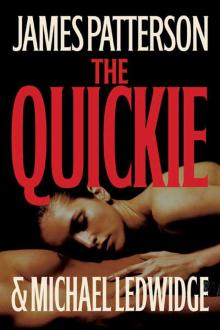 The Quickie
The Quickie Little Black Dress
Little Black Dress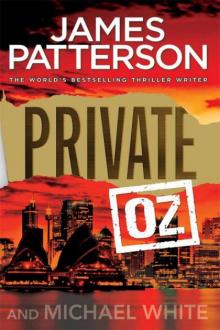 Private Oz
Private Oz Homeroom Diaries
Homeroom Diaries Gone
Gone Lifeguard
Lifeguard Kill Me if You Can
Kill Me if You Can Bullseye
Bullseye Confessions of a Murder Suspect
Confessions of a Murder Suspect Black Friday
Black Friday Manhunt
Manhunt Filthy Rich
Filthy Rich Step on a Crack
Step on a Crack Private
Private Private India
Private India Game Over
Game Over Private Sydney
Private Sydney The Murder House
The Murder House Mistress
Mistress I, Michael Bennett
I, Michael Bennett The Gift
The Gift The Postcard Killers
The Postcard Killers The Shut-In
The Shut-In The House Husband
The House Husband The Lost
The Lost I, Alex Cross
I, Alex Cross Going Bush
Going Bush 16th Seduction
16th Seduction The Jester
The Jester Along Came a Spider
Along Came a Spider The Lake House
The Lake House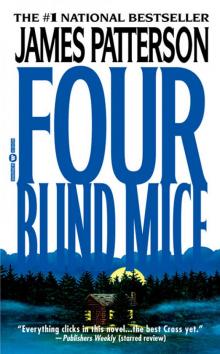 Four Blind Mice
Four Blind Mice Tick Tock
Tick Tock Private L.A.
Private L.A. Middle School, the Worst Years of My Life
Middle School, the Worst Years of My Life Cross Country
Cross Country The Final Warning
The Final Warning Word of Mouse
Word of Mouse Come and Get Us
Come and Get Us Sail
Sail I Funny TV: A Middle School Story
I Funny TV: A Middle School Story Private London
Private London Save Rafe!
Save Rafe! Swimsuit
Swimsuit Sam's Letters to Jennifer
Sam's Letters to Jennifer 3rd Degree
3rd Degree Double Cross
Double Cross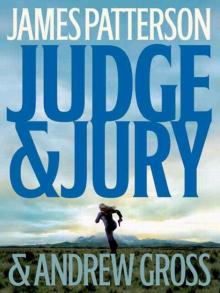 Judge & Jury
Judge & Jury Kiss the Girls
Kiss the Girls Second Honeymoon
Second Honeymoon Guilty Wives
Guilty Wives 1st to Die
1st to Die NYPD Red 4
NYPD Red 4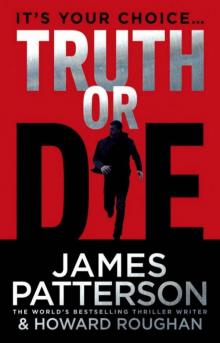 Truth or Die
Truth or Die Private Vegas
Private Vegas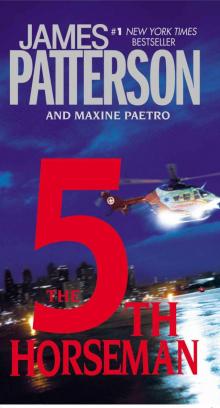 The 5th Horseman
The 5th Horseman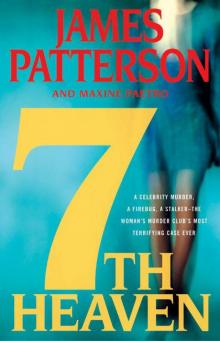 7th Heaven
7th Heaven I Even Funnier
I Even Funnier Cross My Heart
Cross My Heart Let’s Play Make-Believe
Let’s Play Make-Believe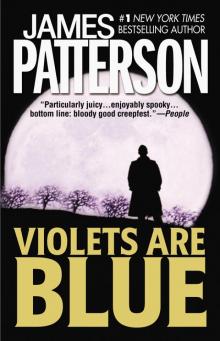 Violets Are Blue
Violets Are Blue Zoo
Zoo Home Sweet Murder
Home Sweet Murder The Private School Murders
The Private School Murders Alex Cross, Run
Alex Cross, Run Hunted: BookShots
Hunted: BookShots The Fire
The Fire Chase
Chase 14th Deadly Sin
14th Deadly Sin Bloody Valentine
Bloody Valentine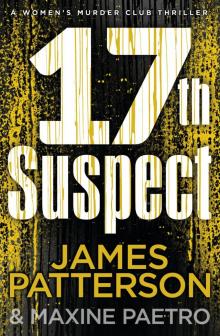 The 17th Suspect
The 17th Suspect The 8th Confession
The 8th Confession 4th of July
4th of July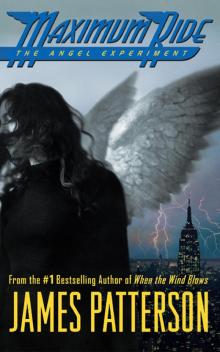 The Angel Experiment
The Angel Experiment Crazy House
Crazy House School's Out - Forever
School's Out - Forever Suzanne's Diary for Nicholas
Suzanne's Diary for Nicholas Cross Justice
Cross Justice Maximum Ride Forever
Maximum Ride Forever The Thomas Berryman Number
The Thomas Berryman Number Honeymoon
Honeymoon The Medical Examiner
The Medical Examiner Killer Chef
Killer Chef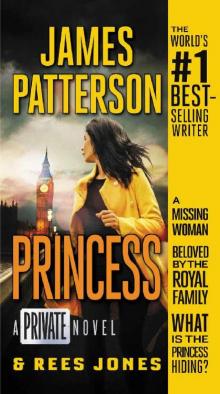 Private Princess
Private Princess Private Games
Private Games Burn
Burn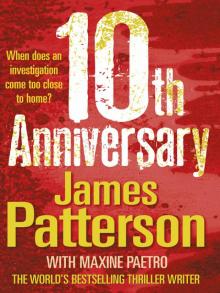 10th Anniversary
10th Anniversary I Totally Funniest: A Middle School Story
I Totally Funniest: A Middle School Story Taking the Titanic
Taking the Titanic The Lawyer Lifeguard
The Lawyer Lifeguard The 6th Target
The 6th Target Cross the Line
Cross the Line Alert
Alert Saving the World and Other Extreme Sports
Saving the World and Other Extreme Sports 1st Case
1st Case Unlucky 13
Unlucky 13 Haunted
Haunted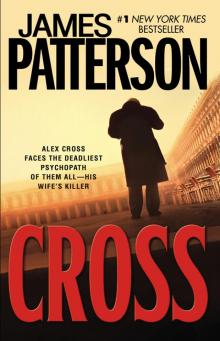 Cross
Cross Lost
Lost 11th Hour
11th Hour Bookshots Thriller Omnibus
Bookshots Thriller Omnibus Target: Alex Cross
Target: Alex Cross Hope to Die
Hope to Die The Noise
The Noise Worst Case
Worst Case Dog's Best Friend
Dog's Best Friend Nevermore: The Final Maximum Ride Adventure
Nevermore: The Final Maximum Ride Adventure I Funny: A Middle School Story
I Funny: A Middle School Story NYPD Red
NYPD Red Till Murder Do Us Part
Till Murder Do Us Part Black & Blue
Black & Blue Fang
Fang Liar Liar
Liar Liar The Inn
The Inn Sundays at Tiffany's
Sundays at Tiffany's Middle School: Escape to Australia
Middle School: Escape to Australia Cat and Mouse
Cat and Mouse Instinct
Instinct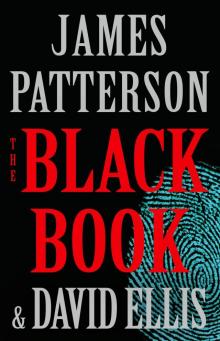 The Black Book
The Black Book London Bridges
London Bridges Toys
Toys The Last Days of John Lennon
The Last Days of John Lennon Roses Are Red
Roses Are Red Witch & Wizard
Witch & Wizard The Dolls
The Dolls The Christmas Wedding
The Christmas Wedding The River Murders
The River Murders The 18th Abduction
The 18th Abduction The 19th Christmas
The 19th Christmas Middle School: How I Got Lost in London
Middle School: How I Got Lost in London Just My Rotten Luck
Just My Rotten Luck Red Alert
Red Alert Walk in My Combat Boots
Walk in My Combat Boots Three Women Disappear
Three Women Disappear 21st Birthday
21st Birthday All-American Adventure
All-American Adventure Becoming Muhammad Ali
Becoming Muhammad Ali The Murder of an Angel
The Murder of an Angel The 13-Minute Murder
The 13-Minute Murder Rebels With a Cause
Rebels With a Cause The Trial
The Trial Run for Your Life
Run for Your Life The House Next Door
The House Next Door NYPD Red 2
NYPD Red 2 Ali Cross
Ali Cross The Big Bad Wolf
The Big Bad Wolf Middle School: My Brother Is a Big, Fat Liar
Middle School: My Brother Is a Big, Fat Liar Private Paris
Private Paris Miracle on the 17th Green
Miracle on the 17th Green The People vs. Alex Cross
The People vs. Alex Cross The Beach House
The Beach House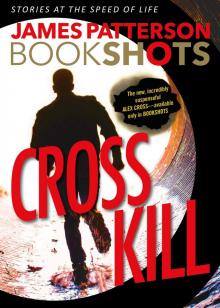 Cross Kill
Cross Kill Dog Diaries
Dog Diaries The President's Daughter
The President's Daughter Happy Howlidays
Happy Howlidays Detective Cross
Detective Cross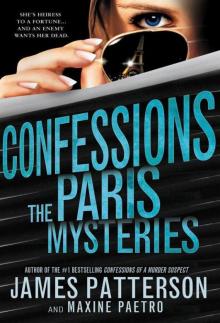 The Paris Mysteries
The Paris Mysteries Watch the Skies
Watch the Skies 113 Minutes
113 Minutes Alex Cross's Trial
Alex Cross's Trial NYPD Red 3
NYPD Red 3 Hush Hush
Hush Hush Now You See Her
Now You See Her Merry Christmas, Alex Cross
Merry Christmas, Alex Cross 2nd Chance
2nd Chance Private Royals
Private Royals Two From the Heart
Two From the Heart Max
Max I, Funny
I, Funny Blindside (Michael Bennett)
Blindside (Michael Bennett) Sophia, Princess Among Beasts
Sophia, Princess Among Beasts Armageddon
Armageddon Don't Blink
Don't Blink NYPD Red 6
NYPD Red 6 The First Lady
The First Lady Texas Outlaw
Texas Outlaw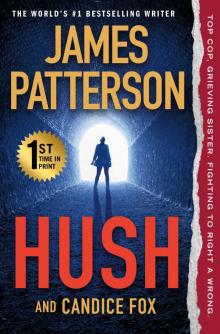 Hush
Hush Beach Road
Beach Road Private Berlin
Private Berlin The Family Lawyer
The Family Lawyer Jack & Jill
Jack & Jill The Midwife Murders
The Midwife Murders Middle School: Rafe's Aussie Adventure
Middle School: Rafe's Aussie Adventure The Murder of King Tut: The Plot to Kill the Child King
The Murder of King Tut: The Plot to Kill the Child King First Love
First Love The Dangerous Days of Daniel X
The Dangerous Days of Daniel X Hawk
Hawk Private Delhi
Private Delhi The 20th Victim
The 20th Victim The Shadow
The Shadow Katt vs. Dogg
Katt vs. Dogg The Palm Beach Murders
The Palm Beach Murders 2 Sisters Detective Agency
2 Sisters Detective Agency Humans, Bow Down
Humans, Bow Down You've Been Warned
You've Been Warned Cradle and All
Cradle and All 20th Victim: (Women’s Murder Club 20) (Women's Murder Club)
20th Victim: (Women’s Murder Club 20) (Women's Murder Club) Season of the Machete
Season of the Machete Woman of God
Woman of God Mary, Mary
Mary, Mary Blindside
Blindside Invisible
Invisible The Chef
The Chef Revenge
Revenge See How They Run
See How They Run Pop Goes the Weasel
Pop Goes the Weasel 15th Affair
15th Affair Middle School: Get Me Out of Here!
Middle School: Get Me Out of Here! Middle School: How I Survived Bullies, Broccoli, and Snake Hill
Middle School: How I Survived Bullies, Broccoli, and Snake Hill From Hero to Zero - Chris Tebbetts
From Hero to Zero - Chris Tebbetts G'day, America
G'day, America Max Einstein Saves the Future
Max Einstein Saves the Future The Cornwalls Are Gone
The Cornwalls Are Gone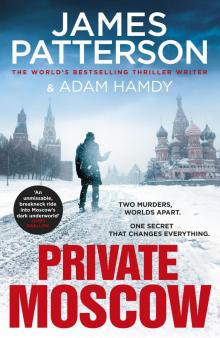 Private Moscow
Private Moscow Two Schools Out - Forever
Two Schools Out - Forever Hollywood 101
Hollywood 101 Deadly Cargo: BookShots
Deadly Cargo: BookShots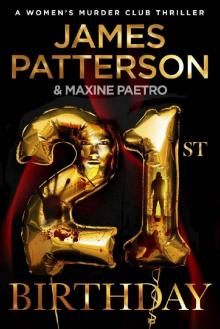 21st Birthday (Women's Murder Club)
21st Birthday (Women's Murder Club) The Sky Is Falling
The Sky Is Falling Cajun Justice
Cajun Justice Bennett 06 - Gone
Bennett 06 - Gone The House of Kennedy
The House of Kennedy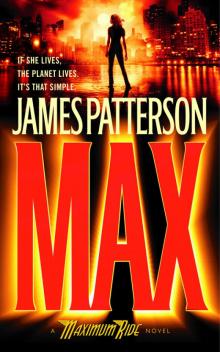 Waterwings
Waterwings Murder is Forever, Volume 2
Murder is Forever, Volume 2 Maximum Ride 02
Maximum Ride 02 Treasure Hunters--The Plunder Down Under
Treasure Hunters--The Plunder Down Under Private Royals: BookShots (A Private Thriller)
Private Royals: BookShots (A Private Thriller) After the End
After the End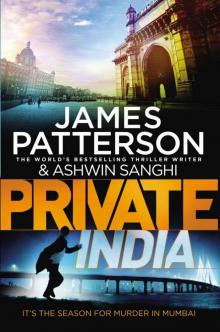 Private India: (Private 8)
Private India: (Private 8) Escape to Australia
Escape to Australia WMC - First to Die
WMC - First to Die Boys Will Be Boys
Boys Will Be Boys The Red Book
The Red Book 11th hour wmc-11
11th hour wmc-11 Hidden
Hidden You've Been Warned--Again
You've Been Warned--Again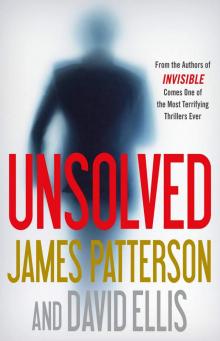 Unsolved
Unsolved Pottymouth and Stoopid
Pottymouth and Stoopid Hope to Die: (Alex Cross 22)
Hope to Die: (Alex Cross 22) The Moores Are Missing
The Moores Are Missing Black & Blue: BookShots (Detective Harriet Blue Series)
Black & Blue: BookShots (Detective Harriet Blue Series) Airport - Code Red: BookShots
Airport - Code Red: BookShots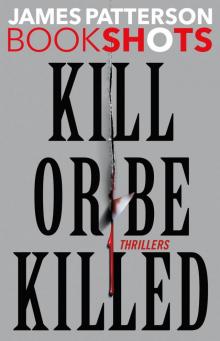 Kill or Be Killed
Kill or Be Killed School's Out--Forever
School's Out--Forever When the Wind Blows
When the Wind Blows Heist: BookShots
Heist: BookShots Murder of Innocence (Murder Is Forever)
Murder of Innocence (Murder Is Forever) Red Alert_An NYPD Red Mystery
Red Alert_An NYPD Red Mystery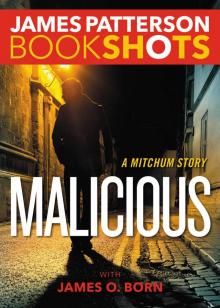 Malicious
Malicious Scott Free
Scott Free The Summer House
The Summer House French Kiss
French Kiss Treasure Hunters
Treasure Hunters Murder Is Forever, Volume 1
Murder Is Forever, Volume 1 Secret of the Forbidden City
Secret of the Forbidden City Cross the Line: (Alex Cross 24)
Cross the Line: (Alex Cross 24) Witch & Wizard: The Fire
Witch & Wizard: The Fire![Women's Murder Club [06] The 6th Target Read online](http://i1.bookreadfree.com/i/03/24/womens_murder_club_06_the_6th_target_preview.jpg) Women's Murder Club [06] The 6th Target
Women's Murder Club [06] The 6th Target Cross My Heart ac-21
Cross My Heart ac-21 Alex Cross’s Trial ак-15
Alex Cross’s Trial ак-15 Alex Cross 03 - Jack & Jill
Alex Cross 03 - Jack & Jill Liar Liar: (Harriet Blue 3) (Detective Harriet Blue Series)
Liar Liar: (Harriet Blue 3) (Detective Harriet Blue Series) Cross Country ак-14
Cross Country ак-14 Honeymoon h-1
Honeymoon h-1 Maximum Ride: The Angel Experiment
Maximum Ride: The Angel Experiment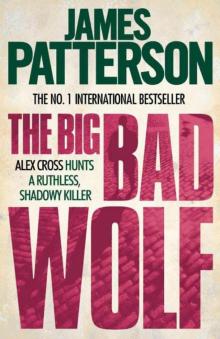 The Big Bad Wolf ак-9
The Big Bad Wolf ак-9 Dead Heat: BookShots (Book Shots)
Dead Heat: BookShots (Book Shots) Kill and Tell
Kill and Tell Avalanche
Avalanche Robot Revolution
Robot Revolution Public School Superhero
Public School Superhero 12th of Never
12th of Never Max: A Maximum Ride Novel
Max: A Maximum Ride Novel All-American Murder
All-American Murder Murder Games
Murder Games Robots Go Wild!
Robots Go Wild! My Life Is a Joke
My Life Is a Joke Private: Gold
Private: Gold Demons and Druids
Demons and Druids Jacky Ha-Ha
Jacky Ha-Ha Postcard killers
Postcard killers Princess: A Private Novel
Princess: A Private Novel Kill Alex Cross ac-18
Kill Alex Cross ac-18 12th of Never wmc-12
12th of Never wmc-12 The Murder of King Tut
The Murder of King Tut I Totally Funniest
I Totally Funniest Cross Fire ак-17
Cross Fire ак-17 Count to Ten
Count to Ten![Women's Murder Club [10] 10th Anniversary Read online](http://i1.bookreadfree.com/i1/03/30/womens_murder_club_10_10th_anniversary_preview.jpg) Women's Murder Club [10] 10th Anniversary
Women's Murder Club [10] 10th Anniversary![Women's Murder Club [01] 1st to Die Read online](http://i1.bookreadfree.com/i1/03/31/womens_murder_club_01_1st_to_die_preview.jpg) Women's Murder Club [01] 1st to Die
Women's Murder Club [01] 1st to Die I, Michael Bennett mb-5
I, Michael Bennett mb-5 Nooners
Nooners![Women's Murder Club [08] The 8th Confession Read online](http://i1.bookreadfree.com/i1/04/03/womens_murder_club_08_the_8th_confession_preview.jpg) Women's Murder Club [08] The 8th Confession
Women's Murder Club [08] The 8th Confession Private jm-1
Private jm-1 Treasure Hunters: Danger Down the Nile
Treasure Hunters: Danger Down the Nile Worst Case mb-3
Worst Case mb-3 Don’t Blink
Don’t Blink The Games
The Games The Medical Examiner: A Women's Murder Club Story
The Medical Examiner: A Women's Murder Club Story Black Market
Black Market Gone mb-6
Gone mb-6![Women's Murder Club [02] 2nd Chance Read online](http://i1.bookreadfree.com/i1/04/04/womens_murder_club_02_2nd_chance_preview.jpg) Women's Murder Club [02] 2nd Chance
Women's Murder Club [02] 2nd Chance French Twist
French Twist Kenny Wright
Kenny Wright Manhunt: A Michael Bennett Story
Manhunt: A Michael Bennett Story Cross Kill: An Alex Cross Story
Cross Kill: An Alex Cross Story Confessions of a Murder Suspect td-1
Confessions of a Murder Suspect td-1 Second Honeymoon h-2
Second Honeymoon h-2 Chase_A BookShot_A Michael Bennett Story
Chase_A BookShot_A Michael Bennett Story Confessions: The Paris Mysteries
Confessions: The Paris Mysteries![Women's Murder Club [09] The 9th Judgment Read online](http://i1.bookreadfree.com/i2/04/08/womens_murder_club_09_the_9th_judgment_preview.jpg) Women's Murder Club [09] The 9th Judgment
Women's Murder Club [09] The 9th Judgment Absolute Zero
Absolute Zero Nevermore: The Final Maximum Ride Adventure mr-8
Nevermore: The Final Maximum Ride Adventure mr-8 Angel: A Maximum Ride Novel mr-7
Angel: A Maximum Ride Novel mr-7 Juror #3
Juror #3 Million-Dollar Mess Down Under
Million-Dollar Mess Down Under The Verdict: BookShots (A Jon Roscoe Thriller)
The Verdict: BookShots (A Jon Roscoe Thriller)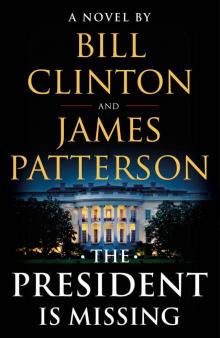 The President Is Missing: A Novel
The President Is Missing: A Novel![Women's Murder Club [04] 4th of July Read online](http://i1.bookreadfree.com/i2/04/06/womens_murder_club_04_4th_of_july_preview.jpg) Women's Murder Club [04] 4th of July
Women's Murder Club [04] 4th of July The Hostage: BookShots (Hotel Series)
The Hostage: BookShots (Hotel Series) $10,000,000 Marriage Proposal
$10,000,000 Marriage Proposal Diary of a Succubus
Diary of a Succubus Unbelievably Boring Bart
Unbelievably Boring Bart Angel: A Maximum Ride Novel
Angel: A Maximum Ride Novel Stingrays
Stingrays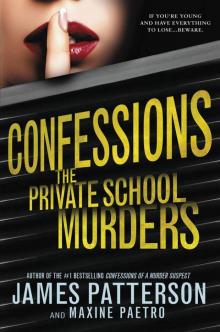 Confessions: The Private School Murders
Confessions: The Private School Murders Stealing Gulfstreams
Stealing Gulfstreams![Women's Murder Club [05] The 5th Horseman Read online](http://i1.bookreadfree.com/i2/04/05/womens_murder_club_05_the_5th_horseman_preview.jpg) Women's Murder Club [05] The 5th Horseman
Women's Murder Club [05] The 5th Horseman Zoo 2
Zoo 2 Jack Morgan 02 - Private London
Jack Morgan 02 - Private London Treasure Hunters--Quest for the City of Gold
Treasure Hunters--Quest for the City of Gold The Christmas Mystery
The Christmas Mystery Murder in Paradise
Murder in Paradise Kidnapped: BookShots (A Jon Roscoe Thriller)
Kidnapped: BookShots (A Jon Roscoe Thriller)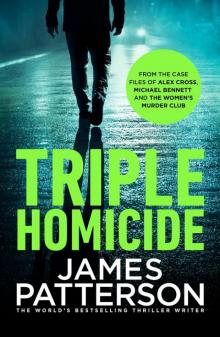 Triple Homicide_Thrillers
Triple Homicide_Thrillers 16th Seduction: (Women’s Murder Club 16) (Women's Murder Club)
16th Seduction: (Women’s Murder Club 16) (Women's Murder Club)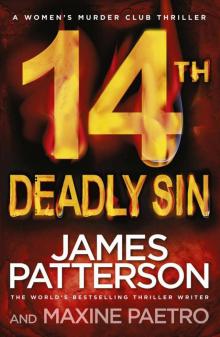 14th Deadly Sin: (Women’s Murder Club 14)
14th Deadly Sin: (Women’s Murder Club 14) Texas Ranger
Texas Ranger Witch & Wizard 04 - The Kiss
Witch & Wizard 04 - The Kiss![Women's Murder Club [03] 3rd Degree Read online](http://i1.bookreadfree.com/i2/04/12/womens_murder_club_03_3rd_degree_preview.jpg) Women's Murder Club [03] 3rd Degree
Women's Murder Club [03] 3rd Degree Break Point: BookShots
Break Point: BookShots Alex Cross 04 - Cat & Mouse
Alex Cross 04 - Cat & Mouse Maximum Ride
Maximum Ride Fifty Fifty: (Harriet Blue 2) (Detective Harriet Blue Series)
Fifty Fifty: (Harriet Blue 2) (Detective Harriet Blue Series) Alex Cross 02 - Kiss the Girls
Alex Cross 02 - Kiss the Girls The President Is Missing
The President Is Missing Hunted
Hunted House of Robots
House of Robots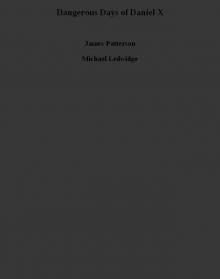 Dangerous Days of Daniel X
Dangerous Days of Daniel X Tick Tock mb-4
Tick Tock mb-4 10th Anniversary wmc-10
10th Anniversary wmc-10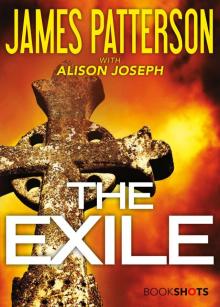 The Exile
The Exile Private Games-Jack Morgan 4 jm-4
Private Games-Jack Morgan 4 jm-4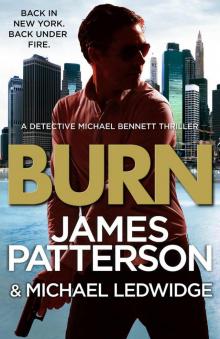 Burn: (Michael Bennett 7)
Burn: (Michael Bennett 7) Laugh Out Loud
Laugh Out Loud The People vs. Alex Cross: (Alex Cross 25)
The People vs. Alex Cross: (Alex Cross 25)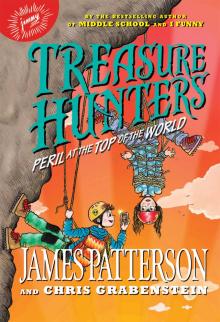 Peril at the Top of the World
Peril at the Top of the World I Funny TV
I Funny TV Merry Christmas, Alex Cross ac-19
Merry Christmas, Alex Cross ac-19 #1 Suspect jm-3
#1 Suspect jm-3 Fang: A Maximum Ride Novel
Fang: A Maximum Ride Novel![Women's Murder Club [07] 7th Heaven Read online](http://i1.bookreadfree.com/i2/04/13/womens_murder_club_07_7th_heaven_preview.jpg) Women's Murder Club [07] 7th Heaven
Women's Murder Club [07] 7th Heaven The End
The End